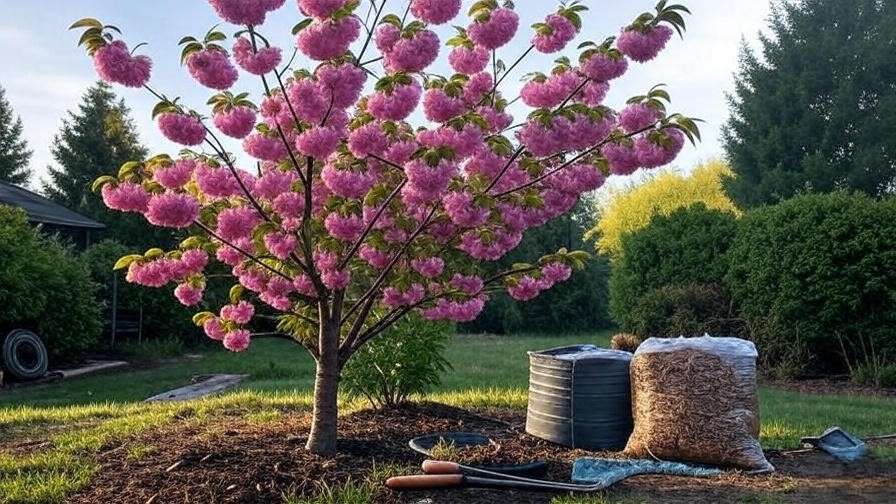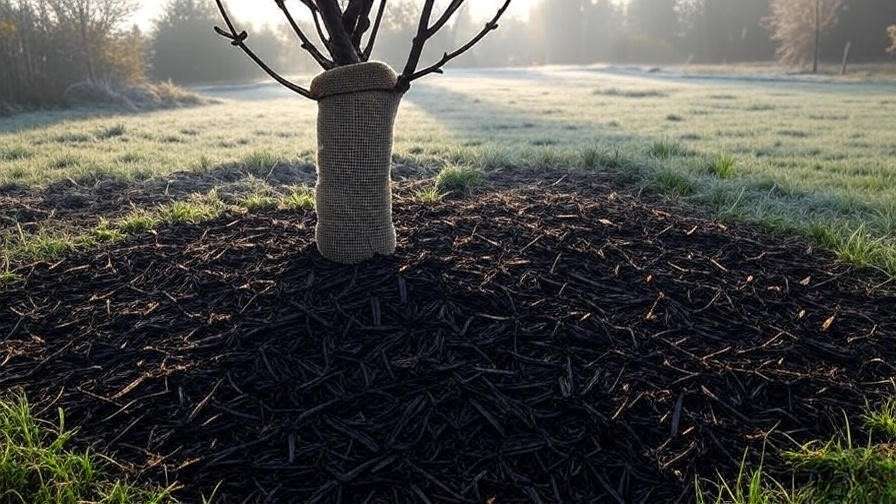Picture this: spring arrives, and your cherry tree, once bursting with juicy fruit, stands bare—no blossoms, no cherries, just disappointment after a brutal winter. If you’re wondering how to revive a cherry tree with no fruit after a cold winter, you’re not alone. Harsh frosts can wreak havoc, but with the right steps, your tree can bounce back to its fruitful glory. As a plant care specialist with over a decade of experience in arboriculture, I’ve helped countless gardeners revive their cherry trees, drawing on insights from horticulturists and real-world successes. In this guide, you’ll discover five expert tips to restore your tree’s health, boost fruit production, and prevent future setbacks. Let’s dive in and bring your cherry tree back to life! 🍒
Understanding Why Your Cherry Tree Isn’t Fruiting ❄️
Reviving a cherry tree starts with understanding why it’s not producing fruit. Cold winters are a common culprit, but other factors can compound the issue. Let’s break it down.
The Impact of a Cold Winter on Cherry Trees
Freezing temperatures, late frosts, or wild weather swings can stress cherry trees, disrupting their ability to produce fruit. According to Dr. Emily Carter, a certified arborist with the International Society of Arboriculture, “Sudden cold snaps can damage flower buds, halt pollination, or weaken a tree’s vascular system, leading to no fruit.” Frost can kill developing buds, while prolonged cold stresses roots, reducing nutrient uptake. Trees in USDA zones 4–7, where cherries thrive, are especially vulnerable to late spring frosts. This damage often shows up as sparse blossoms or no fruit set, leaving gardeners frustrated.
Other Common Causes of Non-Fruiting
Winter isn’t always the sole issue. Other factors include:
- Improper Pruning: Over-pruning or cutting at the wrong time can remove fruiting wood.
- Nutrient Deficiencies: Lack of key nutrients like nitrogen or potassium stunts growth.
- Pest or Disease Pressure: Insects like aphids or diseases like brown rot can weaken trees.
- Pollination Problems: Many cherry varieties need cross-pollination from a compatible tree.
Identifying these issues alongside winter damage helps tailor your revival strategy. For example, a tree stressed by cold and poor soil nutrition needs a different approach than one suffering from pest damage.
Assessing Your Cherry Tree’s Health 🌿
Before jumping into fixes, assess your tree’s condition to understand the extent of the damage. A thorough evaluation ensures you’re addressing the root cause (pun intended!).
Signs of Winter Damage
Start with a visual inspection. Look for:
- Cracked or Peeling Bark: Indicates frost damage or “frost cracks.”
- Dead or Brittle Branches: Twigs that snap easily or show no green inside.
- Sparse Foliage: Thin or uneven leaf growth signals stress.
- No Blossoms: A clear sign of bud damage from late frosts.
Use this checklist to guide your inspection:
- Check the trunk for cracks or discoloration.
- Examine branches for flexibility and signs of life.
- Look for leaf or bud abnormalities compared to a healthy cherry tree.
Conducting a Vitality Test
A simple “scratch test” reveals if your tree is alive:
- Gently scratch a small section of bark on a branch with your fingernail.
- Look for a green layer underneath, indicating living tissue.
- If the tissue is brown or dry, that branch may be dead.
Test multiple branches, as damage may be localized. For roots, dig a small area near the base (6–8 inches deep) to check for firm, white roots versus soft, brown ones. Healthy roots are key to recovery.
When to Seek Professional Help
If your tree shows extensive damage (e.g., over 50% dead branches or severe trunk cracks), consult a certified arborist. They can assess structural integrity and recommend treatments like grafting or soil aeration. Here’s a quick comparison:
| DIY Fixes | Professional Intervention |
|---|---|
| Pruning small dead branches | Grafting for severe damage |
| Applying fertilizer | Advanced soil treatments |
| Mulching for protection | Structural support for splits |
If you’re unsure, a professional can save time and prevent further harm.
5 Expert Tips to Revive Your Cherry Tree 🌱
Now that you’ve assessed the damage, let’s explore five proven strategies to revive your cherry tree and restore its fruiting potential. These tips, grounded in horticultural science, are practical and effective.
Tip 1: Prune Strategically to Encourage Growth ✂️
Pruning is your first step to remove dead wood and stimulate new growth. “Proper pruning redirects the tree’s energy to healthy branches, boosting fruit production,” says horticulturist Dr. Mark Jensen. Here’s how:
- Timing: Prune in late winter or early spring before buds swell, avoiding active growth periods.
- Tools: Use sharp, sterilized pruning shears or loppers to prevent disease spread.
- Technique:
- Remove dead or damaged branches, cutting back to healthy wood.
- Thin crowded areas to improve airflow and light penetration.
- Cut at a 45-degree angle just above a bud to encourage new growth.
Avoid over-pruning—never remove more than 25% of the canopy in one season. For visual learners, a pruning diagram can clarify cuts (consider adding one to your website).
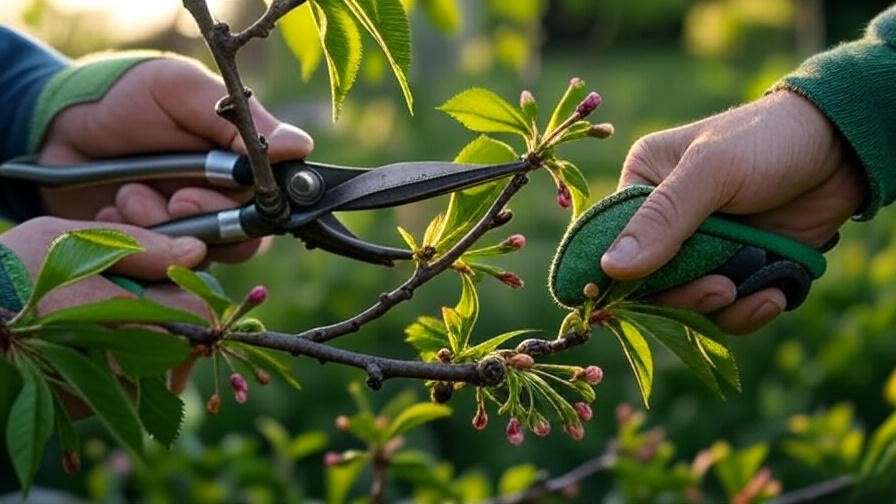
Tip 2: Restore Soil Health and Nutrition 🍎
Winter stress often depletes soil nutrients, starving your cherry tree. Start with a soil test (kits available at garden centers) to check pH (ideal: 6.0–6.5) and nutrient levels. Common deficiencies include:
- Nitrogen: Supports leaf and branch growth.
- Potassium: Enhances fruit development.
- Phosphorus: Strengthens roots.
Apply a balanced, organic fertilizer (e.g., 10-10-10 NPK) in early spring. For a natural boost, try this compost tea recipe:
- Mix 1 gallon of compost with 5 gallons of water.
- Let steep for 24 hours, stirring occasionally.
- Apply to the soil around the tree’s drip line.
Mulch with 2–3 inches of organic matter (e.g., wood chips) to retain moisture and improve soil structure.

Tip 3: Improve Pollination for Future Fruiting 🐝
Many cherry trees, like Bing or Rainier, require cross-pollination from a compatible variety. A cold winter can disrupt pollinator activity, reducing fruit set. To improve pollination:
- Check Compatibility: Ensure a second variety (e.g., Stella for self-pollinating) is nearby (within 50 feet).
- Attract Pollinators: Plant bee-friendly flowers like lavender or marigolds near your tree.
- Hand-Pollinate: Use a small brush to transfer pollen between flowers if natural pollination is low.
A gardener in Oregon shared their success: “After planting a Black Tartarian near my Bing cherry, I saw fruit within two seasons!” Encourage pollinators by avoiding pesticides during bloom.
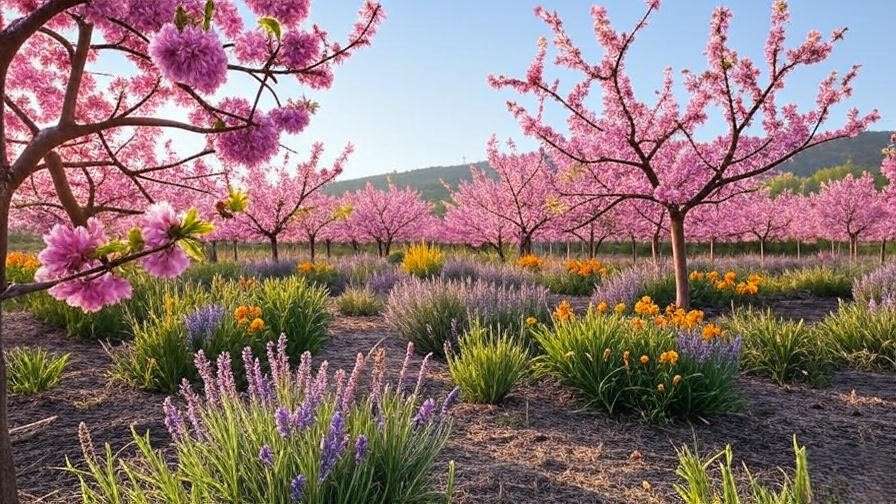
Tip 4: Protect Against Future Cold Damage 🥶
Preventing future winter damage ensures long-term fruit production. Try these protective measures:
- Mulch: Apply 3–4 inches of mulch around the base (keep it 2 inches from the trunk) to insulate roots.
- Wrap Trunks: Use burlap or tree wrap to shield against frost cracks.
- Frost Blankets: Cover young trees during late frosts to protect buds.
Consider cold-hardy varieties like Montmorency or North Star for future planting. Here’s a quick guide:
| Variety | USDA Zones | Cold Hardiness |
|---|---|---|
| Montmorency | 4–7 | High |
| North Star | 4–8 | Very High |
| Stella | 5–8 | Moderate |
Tip 5: Monitor and Manage Pests and Diseases 🐞
Stressed trees are magnets for pests and diseases. Common issues post-winter include:
- Pests: Aphids (suck sap, weaken branches) and cherry fruit flies (damage fruit).
- Diseases: Brown rot (fungal infection on blossoms) and bacterial canker (oozing lesions).
For pests, use neem oil or insecticidal soap. For diseases, apply a copper-based fungicide before bud break. Dr. Sarah Lee, a plant pathologist, advises, “Regular monitoring and early treatment prevent small issues from becoming tree-killers.” Check weekly for signs like sticky residue or discolored leaves.

Long-Term Care for a Thriving Cherry Tree 🌞
Once you’ve implemented the revival tips, consistent care ensures your cherry tree stays healthy and productive for years. Long-term maintenance builds resilience against future stressors like cold winters, pests, or nutrient deficiencies. Here’s how to keep your tree thriving.
Watering and Maintenance Best Practices
Cherry trees need regular care tailored to their seasonal needs. Follow this schedule to maintain optimal health:
- Spring: Water deeply (1–2 inches per week) to support new growth. Apply fertilizer as buds form.
- Summer: Monitor for drought stress; water every 7–10 days if rainfall is low. Mulch to retain moisture.
- Fall: Reduce watering as the tree prepares for dormancy. Clear fallen leaves to prevent fungal growth.
- Winter: Water sparingly (once a month) if winters are dry, focusing on the root zone.
Check soil drainage, as cherry trees hate “wet feet.” If water pools around the base, improve drainage with organic matter or raised beds. Regular monitoring—weekly walks to check for pests, diseases, or structural issues—catches problems early. For example, a gardener in Michigan avoided a major aphid infestation by spotting early signs during routine checks.
Boosting Resilience with Proper Training
Training young cherry trees (or retraining damaged ones) promotes a strong structure for fruit production. “A well-trained tree maximizes sunlight exposure and airflow, reducing disease risk,” says arborist Dr. Emily Carter. Here’s how to train your tree:
- Select a Central Leader: For young trees, choose a strong central trunk and remove competing leaders.
- Shape the Canopy: Encourage 4–6 evenly spaced scaffold branches (45-degree angles) for optimal fruiting.
- Remove Suckers: Cut water sprouts and root suckers to direct energy to fruiting wood.
For visual guidance, consider embedding an infographic showing proper branch angles (30–45 degrees is ideal). Training takes 2–3 years but pays off with higher yields and easier maintenance. Mature trees may need retraining if winter damage caused structural issues—focus on removing weak or crossing branches.
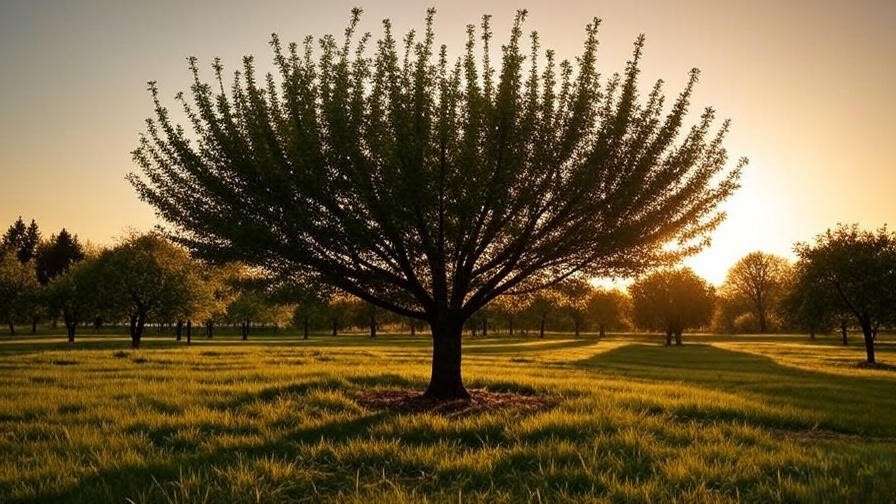
Common Mistakes to Avoid When Reviving a Cherry Tree 🚫
Reviving a cherry tree requires precision, and mistakes can set back progress. Here are common pitfalls and how to avoid them:
- Over-Pruning: Removing too much wood stresses the tree. Stick to 25% or less of the canopy per season.
- Over-Fertilizing: Excess nitrogen leads to leafy growth at the expense of fruit. Follow soil test recommendations.
- Ignoring Drainage: Poorly drained soil causes root rot. Test drainage by digging a 12-inch hole and filling it with water—if it takes over 4 hours to drain, amend the soil.
- Neglecting Pollinators: Spraying pesticides during bloom kills bees. Use organic controls or spray at dusk.
- Skipping Winter Protection: Failing to mulch or wrap leaves trees vulnerable. Start protective measures in late fall.
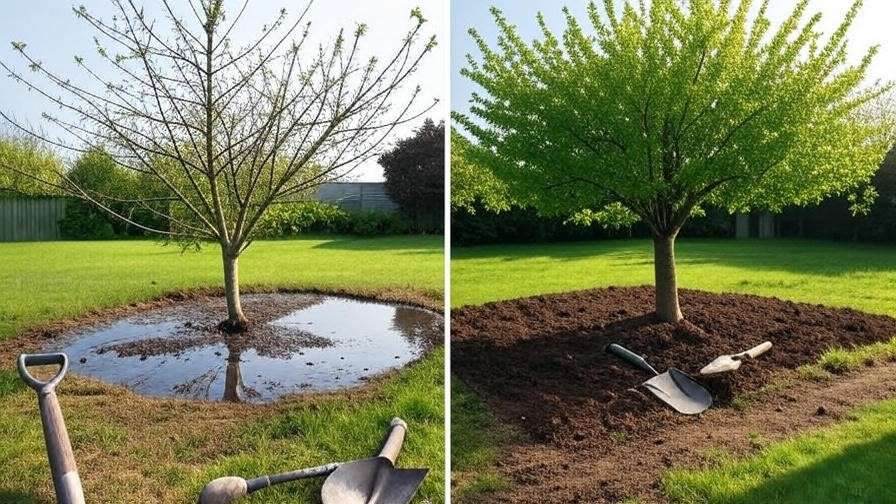
Here’s a quick reference table:
| Do | Don’t |
|---|---|
| Prune lightly in late winter | Cut during active growth |
| Test soil before fertilizing | Apply fertilizer blindly |
| Mulch to insulate roots | Pile mulch against the trunk |
If you’ve made a mistake, act quickly. For example, if you over-fertilized, flush the soil with water to dilute excess nutrients.
FAQs About Reviving a Cherry Tree ❓
To address common reader concerns and boost SEO, here are answers to frequently asked questions:
Q1: How long does it take for a cherry tree to recover after a cold winter?
A: Recovery depends on damage severity. Minor bud damage may resolve in one season with proper care, while severe root or branch damage can take 2–3 years. Consistent pruning, fertilization, and protection speed up the process.
Q2: Can a cherry tree that didn’t fruit this year produce next season?
A: Yes, if you address the underlying issues (e.g., nutrient deficiency, poor pollination). Healthy trees often rebound the following spring with proper care.
Q3: Should I replace my cherry tree if it’s severely damaged?
A: If over 50% of the canopy or roots are dead, replacement may be more cost-effective. An arborist can assess viability. If saving the tree, expect 3–5 years for full recovery.
Q4: What’s the best fertilizer for a stressed cherry tree?
A: A balanced 10-10-10 NPK fertilizer works well, applied in early spring. Organic options like compost or fish emulsion are gentler on stressed trees. Always test soil first.
Q5: How can I tell if my cherry tree is too far gone to save?
A: Perform a scratch test on the trunk and major branches. If no green tissue is found and roots are soft or black, the tree may be dead. Consult an arborist for confirmation.
Conclusion and Call to Action 🎉
Reviving a cherry tree with no fruit after a cold winter is entirely possible with the right approach. By pruning strategically, restoring soil health, improving pollination, protecting against future cold, and managing pests, you can bring your tree back to its fruitful best. Start with one step—perhaps a soil test or light pruning—and monitor progress over the season. Your patience will pay off with vibrant blossoms and juicy cherries. 🍒
Have you revived a cherry tree before? Share your story in the comments or on social media to inspire other gardeners! For more tips, check out our guides on “Caring for Fruit Trees Year-Round” or “Choosing the Best Cherry Varieties for Your Climate.” Let’s grow thriving trees together! 🌳

